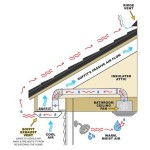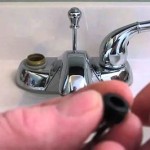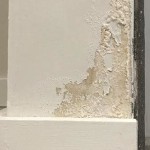Modern Bathroom Basins: A Comprehensive Guide to Design, Materials, and Functionality
The bathroom basin, often referred to as a sink, is a central fixture in any bathroom. Beyond its essential functional role in hygiene practices, the basin contributes significantly to the overall aesthetic and atmosphere of the space. Modern bathroom basins represent a departure from traditional designs, prioritizing sleek lines, innovative materials, and enhanced functionality. This article provides a comprehensive overview of modern bathroom basins, exploring various design options, materials used in their construction, and key considerations for selecting the appropriate basin for a contemporary bathroom.
Design Variations in Modern Bathroom Basins
Modern bathroom basin design encompasses a diverse range of styles, each offering a unique visual appeal and installation method. Understanding these variations is crucial for selecting a basin that complements the intended aesthetic and meets specific space requirements. Several key design types dominate the modern bathroom basin market.
Vessel Basins: Vessel basins, also known as countertop basins, sit directly on top of the vanity unit or countertop. This design offers a dramatic visual statement, often resembling a sculptural element within the bathroom. Vessel basins are available in a wide array of shapes, sizes, and materials, providing substantial design flexibility. Their raised profile can be a defining feature of a modern bathroom design, adding a touch of elegance and sophistication.
Undermount Basins: Undermount basins are installed beneath the countertop, creating a seamless transition between the basin and the surrounding surface. This design choice lends itself to a clean and minimalist aesthetic, as only the interior of the basin is visible. Undermount basins are particularly well-suited for bathrooms with solid surface countertops, as they allow for the creation of a continuous, easily cleaned surface. Their unobtrusive design promotes a sense of spaciousness and order within the bathroom.
Wall-Mounted Basins: Wall-mounted basins are fixed directly to the wall, eliminating the need for a vanity unit or countertop. This design is ideal for smaller bathrooms or spaces where maximizing floor space is a priority. Wall-mounted basins create a sense of lightness and airiness, contributing to a more open and modern feel. They often feature a minimalist design, emphasizing clean lines and simple forms. Plumbing is concealed within the wall, further enhancing the sleek and uncluttered appearance.
Semi-Recessed Basins: Semi-recessed basins offer a compromise between vessel and undermount designs. They are partially embedded within the countertop, with a portion of the basin extending outwards. This design provides a visually interesting element while maintaining a degree of practicality. Semi-recessed basins can be a good option for bathrooms where both aesthetics and functionality are valued. They often feature a more ergonomic design, making them comfortable to use.
Integrated Basins: Integrated basins are seamlessly incorporated into the countertop, creating a single, unified surface. This design is typically found in custom-made vanity units or solid surface countertops. Integrated basins offer a sleek and modern appearance, with no visible joins or seams. They are easy to clean and maintain, promoting hygiene within the bathroom. Integrated basins can be molded into a variety of shapes and sizes, providing significant design flexibility.
Materials Used in Modern Bathroom Basins
The choice of material significantly impacts the aesthetics, durability, and maintenance requirements of a bathroom basin. Modern bathroom basins are crafted from a variety of materials, each offering distinct advantages and disadvantages. Selecting the appropriate material is crucial for achieving the desired look and ensuring the longevity of the basin.
Ceramic: Ceramic is a traditional and widely used material for bathroom basins. It is durable, resistant to stains and scratches, and relatively easy to clean. Ceramic basins are available in a wide range of colors and designs, making them a versatile option for any bathroom style. The manufacturing process allows for intricate shapes and details, providing ample design possibilities. However, ceramic can be susceptible to chipping or cracking if subjected to impact.
Porcelain: Porcelain is a type of ceramic that is fired at higher temperatures, resulting in a denser and more durable material. Porcelain basins are highly resistant to stains, scratches, and chemicals, making them a practical choice for high-traffic bathrooms. They have a smooth, non-porous surface that is easy to clean and maintain. Porcelain basins are available in a variety of finishes, from glossy to matte, allowing for customization to suit different design preferences.
Stone: Natural stone, such as marble, granite, and travertine, offers a luxurious and elegant look for bathroom basins. Stone basins have a unique and distinctive appearance, with natural variations in color and texture. They are durable and resistant to heat, but can be porous and require sealing to prevent staining. Stone basins add a touch of sophistication and natural beauty to any bathroom.
Glass: Glass basins offer a modern and contemporary aesthetic. They are available in a variety of colors, shapes, and textures, providing considerable design flexibility. Glass basins are non-porous and easy to clean, but they can be susceptible to scratches and chips. Tempered glass is often used to enhance the durability of glass basins.
Stainless Steel: Stainless steel basins are durable, hygienic, and easy to clean. They have a modern and industrial appearance, making them a popular choice for contemporary bathrooms. Stainless steel is resistant to rust and corrosion, ensuring the longevity of the basin. However, stainless steel basins can be prone to water spots and fingerprints, requiring regular cleaning.
Solid Surface: Solid surface materials, such as Corian and LG Hi-Macs, are non-porous and seamless, making them highly resistant to stains and bacteria. Solid surface basins can be molded into a variety of shapes and sizes, providing significant design flexibility. They are durable and easy to repair, making them a practical choice for high-use bathrooms. Solid surface basins offer a smooth and contemporary appearance.
Key Considerations for Selecting a Modern Bathroom Basin
Choosing the appropriate bathroom basin involves careful consideration of several factors, including the size of the bathroom, the overall design aesthetic, and the individual needs of the users. Evaluating these factors will help ensure that the selected basin is both functional and aesthetically pleasing.
Size and Space: The size of the bathroom is a primary consideration when selecting a basin. In smaller bathrooms, space-saving options such as wall-mounted basins or corner basins may be the most suitable choice. Larger bathrooms can accommodate larger basins, such as double basins or vessel basins. It is important to measure the available space and consider the overall layout of the bathroom before making a decision.
Design and Style: The design of the basin should complement the overall style of the bathroom. Modern bathrooms often feature clean lines, minimalist designs, and neutral color palettes. Choose a basin that reflects these characteristics, whether it be a sleek undermount basin or a sculptural vessel basin. Consider the material, shape, and finish of the basin to ensure that it harmonizes with the other elements in the bathroom.
Functionality and Usage: The intended use of the basin should also be considered. If the basin will be used frequently for tasks such as washing hands, face, or shaving, choose a basin that is appropriately sized and ergonomically designed. Consider the depth and shape of the basin to ensure that it is comfortable to use. If the basin will be used by multiple people, consider a double basin or a larger single basin.
Faucet Compatibility: The choice of faucet should be compatible with the design of the basin. Vessel basins typically require taller faucets, while undermount basins can be paired with shorter faucets. Consider the style and finish of the faucet to ensure that it complements the basin. Ensure that the faucet is properly installed and that the water flow is adequate for the basin.
Maintenance and Cleaning: The ease of maintenance and cleaning is an important consideration for any bathroom fixture. Choose a basin material that is resistant to stains and scratches and that is easy to clean. Avoid materials that are porous or require special cleaning products. Regular cleaning will help to keep the basin looking its best and prevent the buildup of bacteria.
Budget: The cost of bathroom basins can vary significantly depending on the material, design, and brand. Set a budget before starting the selection process to avoid overspending. Consider the long-term value of the basin, as a higher-quality basin may last longer and require less maintenance. Shop around and compare prices from different retailers to find the best deal.

Luxury Wash Basin Art Wall Hung Sink Solid Surface Modern Mounted Bathroom Kingkonree

Logmey 16 In X 12 Bathroom Vessel Sink Modern Rectangular Porcelain Ceramic Bowl Art Basin White H Lmp18010 The Home Depot

Logmey 24 In Modern Bathroom Oval Vessel Sink White Porcelain Ceramic Art Basin H Lmp18007 The Home Depot

15 Modern Bathroom Basin Designs With Pictures In 2024 Natural Stone

Aquaterior Modern Bathroom Round Artistic Tempered Glass Vessel Vanity Sink Bowl Basin Spa Com

Wash Basin Artificial Stone Solid Surface Rectangular Bathroom Vanity Sinks Modern Kkr M072 Kingkonree

White Porcelain Ceramic Rectangular Modern Above Counter Bathroom Vessel Vanity Sink Art Basin Al Mp18006 The Home Depot

15 Modern Bathroom Basin Designs With Pictures In 2024 Black Sink Countertop

Solid Surface Wall Hung Basin Manufacturer Kingkonree

Bathroom Sinks Modern
Related Posts







